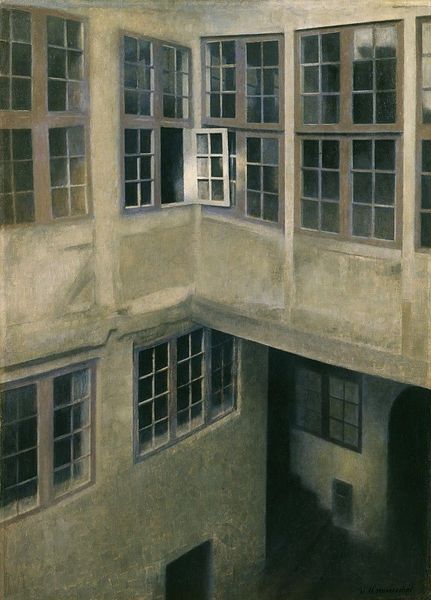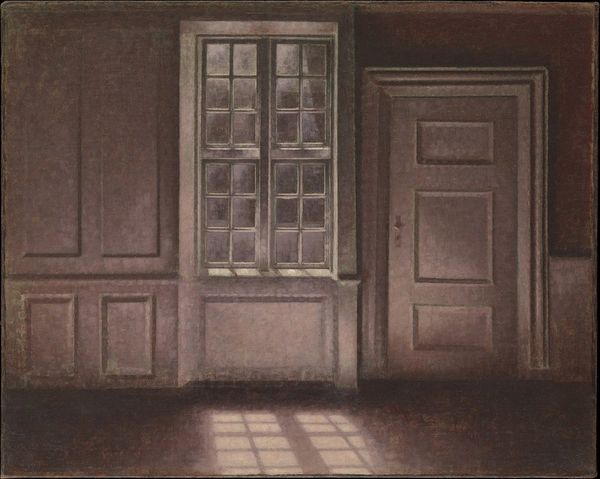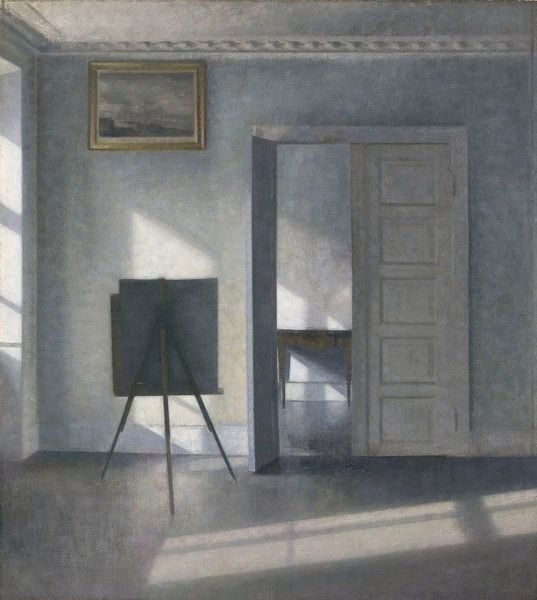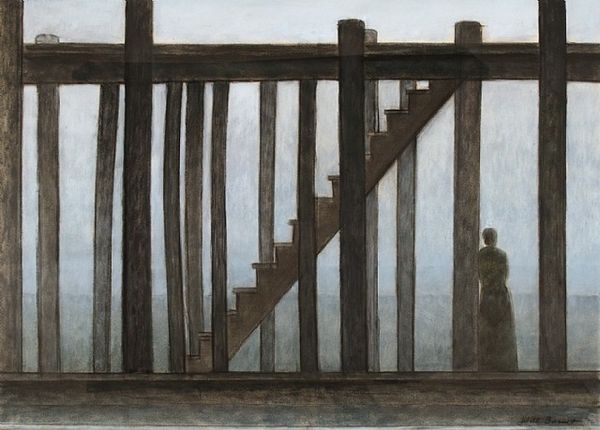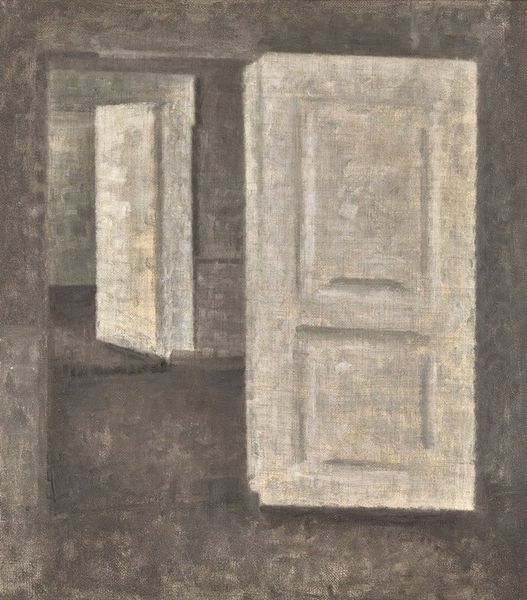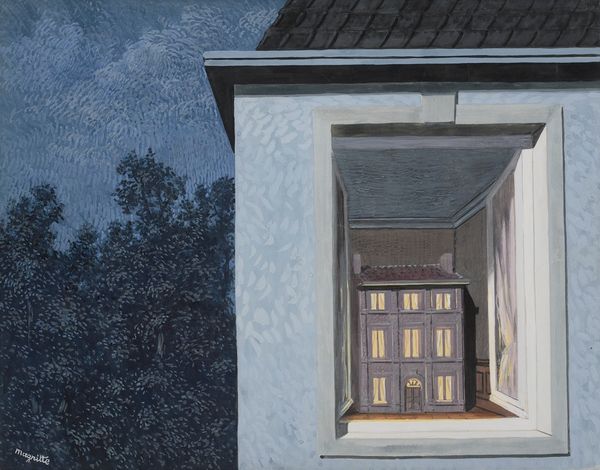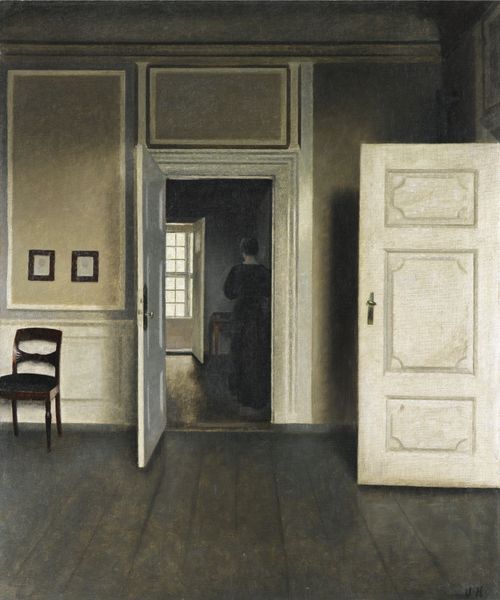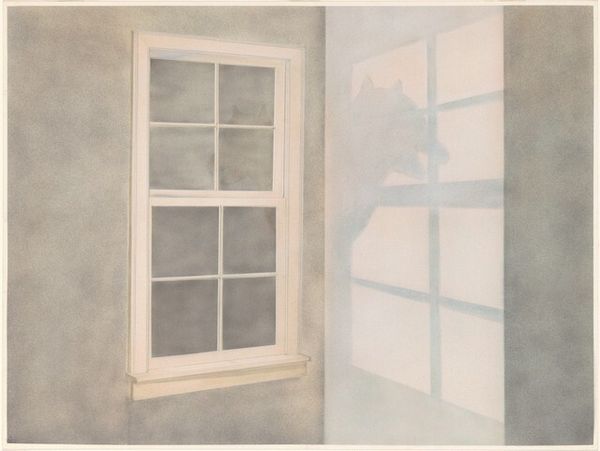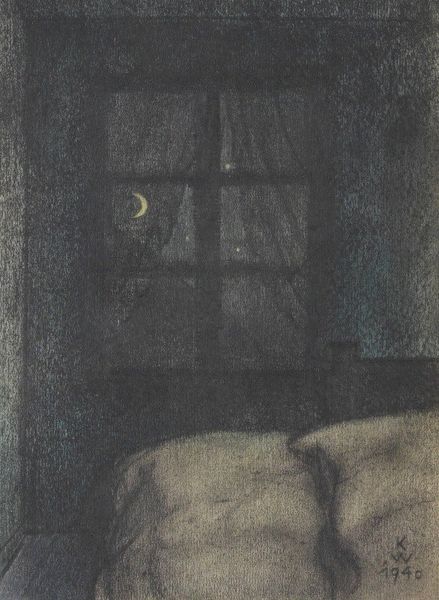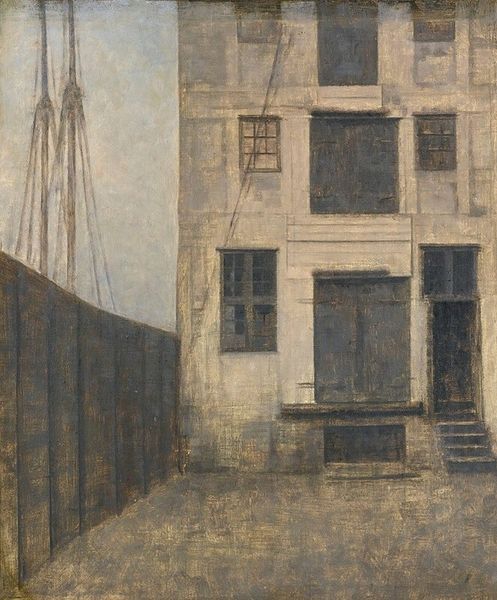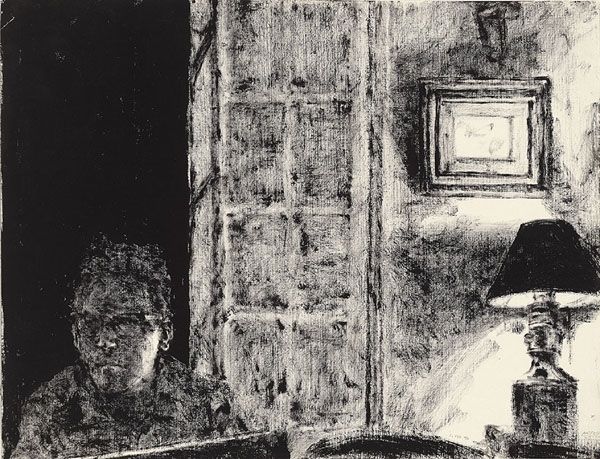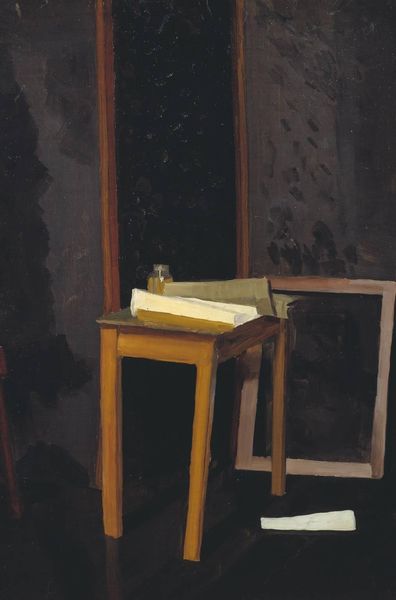
painting, oil-paint
#
painting
#
oil-paint
#
modernism
#
realism
Copyright: Public Domain: Artvee
Editor: Here we have "The balcony room at Spurveskjul," an oil painting by Vilhelm Hammershøi. It’s a spare scene, mostly gray, with a stark white door opening onto what looks like another gray space. What do you see in this piece? Curator: Hammershøi often depicted empty rooms like this, and it's impossible to separate these interiors from the social context of his time. Consider the constraints placed on women in domestic spaces during the late 19th and early 20th centuries. The subdued palette and vacant composition can be interpreted as a commentary on confinement and limited agency. What do you make of the absence of figures? Editor: I hadn’t considered it that way. I just thought it felt…quiet. But the absence, as you point out, creates a void. Curator: Exactly. The lack of human presence forces us to consider the sociopolitical dimensions of the space itself. Is it a sanctuary, or a cage? The ambiguity is crucial. How do you feel this aligns, or doesn’t align, with feminist perspectives on domesticity? Editor: I can see how the sparseness and muted colors could represent a sort of oppression, a silencing. But then the open door suggests possibility. Or does it simply reveal another limited space? It's unsettling. Curator: Precisely. It reflects the paradox of the domestic sphere, a space simultaneously offering refuge and imposing restrictions, particularly along gendered lines. Hammershøi presents us not with answers, but with questions about power, space, and representation. Editor: I now understand that an image of a bare room can actually reveal cultural narratives. Thanks! Curator: Absolutely! Considering art within its broader cultural moment makes for a richer experience.
Comments
No comments
Be the first to comment and join the conversation on the ultimate creative platform.
